#i told you i will start including faust more in my art
Explore tagged Tumblr posts
Text


There's nothing he wouldn't do for his girls
#bg3#shadowheart#wolfheart#connecticut tav#weredaughter#werewolf#oc:faust#oc#i told you i will start including faust more in my art
839 notes
·
View notes
Text
BIG 101 PENTAGON THEORY // SPOILERS FOR CANTO VI, DEMIAN (book), LITTLE PRINCE (book), LEVIATHAN, LIBRARY OF RUINA, a little bit of Divine Comedy too
RG - Red Gaze, PT - Purple Tear, LP - Little Prince, DC - Divine Comedy. Grammar mistakes can appear due to me not being very fluent in English.

So… After the new Demian scene appeared, I found it convenient to finally unleash my Dante=Sinclair pentagon theory, based on some assumptions I made from reading the source books of all of these characters. Before I start, I need to aknowledge some other things:
1. I don’t find this theory as something that actually will happen, since it may be based on my own biased opinions towards some of the characters included
2. Most of my assumptions are made through reading into intertext of the source books and how it would look more cool to potentially appear in a game. PM interpretation of books may be completely opposite from mine, so ig we will see how close I was later
3. I don’t use other sinners for my theory, since most of them are not marked, can’t use shin from what we know and/or mostly have finished self-centered story. The only one that probably will be added to pentagon is Faust, since her source is too important for Hesse as a writer and the motif of soul duality exists as an important topic in both Demian and Faust books. Also she knows too much about the Stars from what we can see in the prologue and later in her dialogues with us.
Part 1. Purple Tear
PT=Demian’s mother feels like canon already for me, but maybe just because I discussed it too much with my friends. So the main point of this theory is that Demian and PT appear to have the same main themes as characters and have similar powers, so him being Iori’s son will be natural. For example, the snake theme being introduced to us with Iori’s snake eyes in Leviathan manga or with the blue snake representing Demian on LCB Sinclair art. Multidimensional traveling powers, Shin being mostly PT’s disciples thing etc etc. Also Demian had purple eyes on his first promotional art and even though it was changed later, it is still an important thing that was planned by PM. For me it's an obvious moment for a lot of reasons, but in reality they just feel like relatives and the more you think about it the more it becomes obvious.
As Demian’s mother, she becomes frau Eva naturally and potential Sinclair milfhunter’s interest.
Also I believe in Iori as a higher-up person in Limbus Company assumption. As a person, who sees countless possibilities, her choices on sinners of LCB feels natural and the fact that Vergilius out of all people becomes our guide just approves it to me.
So I added ‘Demian’ to her as a source just to start, but we can also add ‘Little Prince’ as I believe that she also represents the snake from the start of Prince’s adventure on Earth and his end on it. The Snake claims to have some sort of space-traveling power after all and while representing Birth and Death of Prince on Earth, she's a good pick for a mother figure representation.
Part 2. Red Gaze
Not too much to say here, but the obvious things we know. The Shin user triangle, even though Verg and Demian probably ain’t ever met each other once, still exists in the context of this theory. We can or can not draw a line between Demian and Vergilius, but I like to do it for the sake of making a point how they both are PT’s disciples.
The christmas trauma line here is mostly for funsies, but it’s obviously not a coincidence on how the whole Sinclair’s family killing incident happened at the same time as Vegilius’ orphanage incident and how both suspicious shin users just watched them suffer to mentor them later.
Dante and RG are connected through Divine Comedy, which is told directly from the game.
Part 3. Demian
The most interesting and most intertextually written character in the game.
Sinclair being the rose became more believable to me than him being the fox after a new scene, but I still think both can be true. As we know from Demian book - Sinclair is final destination of Demian’s journey, from whom Max parted for unknown reasons (basically not answered his letters while doing his own fun stuff ig) and even tried to adapt to live in the world ignoring his marked nature (the “I am actually a lieutenant” scene in the 7th chapter). He is meeting Sinclair at first to part with him later just to end up becoming a metaphorical part of him at the end, probably dying physically. The same happens with Prince and Rose relationships in the LP. From them meeting suddenly to part later because of Prince’s complicated feelings to Prince finally coming back to her after learning how to love her and realizing her importance for his existence as a person in the metaphysical form, leaving his physical body behind. The story is too similar for Sinclair to not be Rose. The main counterargument here is the fact that we don’t know when Demian started his journey and Sinclair quoting dialogue of LP with fox. I still believe that Sinclair-Rose theory is more likely though, but Sinclair-Fox is still leading us to doomed yaoi in the end.
The Demian-Beatrice part comes from ‘Demian’ as a source too. Sinclair met Beatrice as his muse and basically Demian’s replacement as an image of his own ideals in life, she became a reason for him to stop his self-destruction path. Young love for Sinclair here is more of a reason to keep moving forward to become a better person than actual loving feeling. She is a mythological muse, but not a romantic interest fully. And in an attempt of engraving her image (haha engraving aspect), he accidentally draws Demian instead. We can put it as a direct equation of her to Demian and as a method of inserting an androgynous archetype into Demian’s character. I think of Demian-Beatrice as a cool way to introduce us to Paradiso later with him being our new guide instead of Vergilius. It will become a more logical guess later, in the context of the main part of this theory.
Part 4. Dante and Sinclair
So… Dante is a book version of Sinclair with part of Demian’s soul inside him theory… The main thing from where we should start to think about this is the whole number dilemma within Sinclair’s coat. He should’ve been the 10th Sinner before Dante appeared, but then got changed to 11th. Which is funny since 1.0 and 1.1 is a funny version number calambour. So, questions that theories answers:
1.Demian having sudden interest in Dante and giving him riddles that mostly answers the nature of more of a Demian himself as a person, than giving Dante actual usable information
2.Dante seem to have mark
3.”What will become of me who have been robbed by me”
4.Sinclair is the only sinner we resonated with out of his Canto
5.Sinclair Canto only focusing on the first two chapters of the book, but not taking it as full. His Canto takes not even half of a book, but focuses on a really small part of it. Moby-Dick is a pre-story in Canto V, same basically for Canto I and Canto IV, we are close to the ending of CaP in Canto II and we have seen the true ending of WH in one of the Mirror Worlds with Cathy and Hareton.
6. Why they aren't changing numbers on Sinclair's coat for six Canto already
7. How Demian is able to understand us and how we are able to deeply understand Demian's feelings
8. Why we have any connections to Demian in the past and why we owe him a drawing of all things (Sinclair was a painter in the book)
9. Star is the main motivation of Dante
10. The whole engraving aspect thing. Again, Sinclair was a painter in the book and used drawing as a way to analyze his instinctive feelings
11. Dante having religious motifs and powers associated with either Tree of Life or Tree of Knowledge. Sinclair’s EGO “Branch of Knowledge” naming based on that
12. Dante’s White Night motifs. White Night is basically an Antichrist, but also a God, which connects it with the concept of both god and demon and connecting it with an Abraxas
Maybe some other questions are answered too if you think about it for a little. This is just a very solid assumption that will explain why Demian is so important for us and why Dante seems like a descendant of the Star in the prologue. As a character having another big source book I also believe in him having his own Canto and if he is a part of Dante's character then we should have the duo Canto for both Dante and Demian.
Main thing is how it happened. It's mainly fanfiction from now on. We know that there are Mirror Worlds where the whole book plot is already happened at some point (Cathy and Hareton scene in C6). So one of these basically is the one where Sinclair journey happened some other way. Maybe it was the one, where Demian helped him before the whole Kromer situation happened. After that moment in book Sinclair fastly falls back to his family and stops questioning their beliefs, so in my theory he could after all have a prosthetic operation that he was destined to before incident. That way we have his life going more calmly and as a son of prosthetic factory owner he could become a big and rich person. That would explain why Panther, Lion and Wolf were very excited over killing him. So, Sinclair of this universe goes over his way just like book Sinclair and participate in the whole June-985 thing. What else happened in June? World War 1 start. Sounds stupid, but WW1 is the main thing to change the world in Demian as a book. So the start of new world is destined to be in June-985 in the City setting, which represents WW1 starting in the Real World. The whole thing happens, and Demian either dies or merges with Sinclair to become some sort of part of him. To prevent the whole June-985 thing from happening, Sinclair travels back in time (which basically not the same, but another Mirror World) using Golden Bough and tries to engrave something that is a key to preventing the whole mass death thing. Limbus World Demian is pissy with Demian from future trying to stop the new World from happening, so he confronts us, but tries to do it in his own way. That way Dante is Sinclair from future from other mirror world and is partly a Demian himself.
In the LP, Pilot also is a child-like adult, really similar to Little Prince in some way. I personally like to read his journey with Prince as a metaphor for himself maturing and letting go his childish side, which Is again connects Dante to Demian.
So, Dante=other Sinclair=Pilot=partly Demian.
#limbus company#limbus theory#sinclair lcb#demian lcb#lcb#dante lcb#vergilius lcb#iori lor#library of ruina
23 notes
·
View notes
Text
Influential Directors of the Silent Film Era
Upon hearing that I am a fan of silent era film, people will ask if I have a favorite actor or movie from the time period. However, when I am asked about my favorites from other fans of silent film, it tends to involve my favorite director. This is because silent film actors had to over gesticulate and performed in an unrealistic way and could not use their tone or words to convey emotion. The directors also did not have a way to review as they shot and would have to use editing skills and strategic cover shots to make sure that everything was done properly and come out the way they imagined it. It was up to the director to be creative and they were forced to be innovative and create ways to convey their vision. Luckily for many average or poor directors of the time, audiences were easily impressed. However, today's more demanding and sophisticated audiences can look back at some of the genius behind the films of silent era Hollywood.
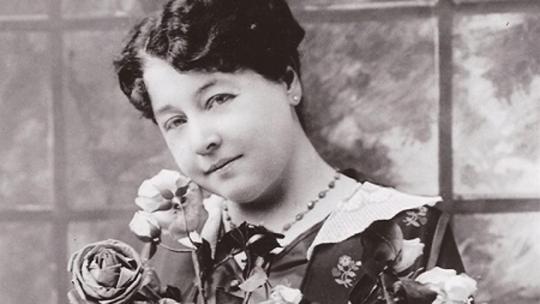
Alice Guy-Blache: Matrimony's Speed Limit (1913) and The Fairy of the Cabbages (1896)
Art director of the film studio The Solax Company, the largest pre-Hollywood movie studio, and camera operator for the France based Gaumont Studio headed up by Louis Lemiere, this woman was a director before any kind of gender expectations were even established. She was a pioneer of the use of audio recordings in conjunction with images and the first filmmaker to systematically develop narrative filming. Guy-Blanche didn't just record an image but used editing and juxtaposition to reveal a story behind the moving pictures. In 1914, when Hollywood studios hired almost exclusively upper class white men as directors, she famously said that there was nothing involved in the staging of a movie that a woman could not do just as easily as a man.

Charlie Chaplin: The Kid (1921), The Gold Rush (1923), City Lights (1931), Modern Times (1936), and The Great Dictator (1940)
It is unfortunate that many people today think of Chaplin as silly or for screwball comedy when, in fact, he was a great satirist of the time. He created his comedy through the eyes of the lower economic class that suffered indignities over which they had no control. He traversed the world as his "Tramp" character who found his fortune by being amiable and lucky. The idea that a good attitude and a turn of luck could result in happiness was all that many Americans had during the World Wars and the Great Depression. He played the part of the sad clown and he was eventually kicked out of the country for poking fun at American society. Today he is beloved for his work, but he was more infamous than famous during a large part of his life.
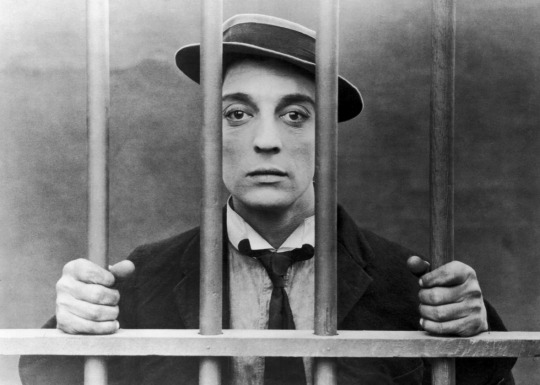
Buster Keaton: Sherlock Jr. (1924), The General (1926), and The Cameraman (1928).
That man that performed the most dangerous of stunts with a deadpan expression, Buster Keaton was a great actor, athlete, stuntman, writer, producer, and director. It is amazing that you could get so much emotion out of a silent actor who does not emote, but Keaton managed to do it. He was also never afraid to go big, often putting his own well being at risk to capture a good shot. Not as well known for his cinematography or editing as many of the other directors of the time, he instead captured performances that were amazing no matter how they were filmed. Famous stunts include the side of a house falling down around him, standing on the front of a moving train, sitting on the side rail of a moving train, and grabbing on to a speeding car with one hand to hitch a ride. If you like films by Jackie Chan, know that he models his films after the work of Buster Keaton: high action and high comedy.

Cecil B. Demille: The Cheat (1915), Male and Female (1919), and The Ten Commandments (1923)
Known as the father of the Hollywood motion picture industry, Demille was the first director to make a real box office hit. He is likely best known for making The Ten Commandments in 1923 and then remaking it again in 1956. If not that, he was also known for his scandalous dramas that depicted women in the nude. This was pre-Code silent film so the rules about what could be shown had not been established. Demille made 30 large production successful films in the silent era and was the most famous director of the time which gave him a lot of freedom. His trademarks were Roman orgies, battles with large wild animals, and large bath scenes. His films are not what most modern film watchers think of when they are considering silent films. That famous quote from the movie Sunset Boulevard in 1950 in which the fading silent actress says "All right, Mr. Demille. I'm ready for my close-up," is referring to this director.
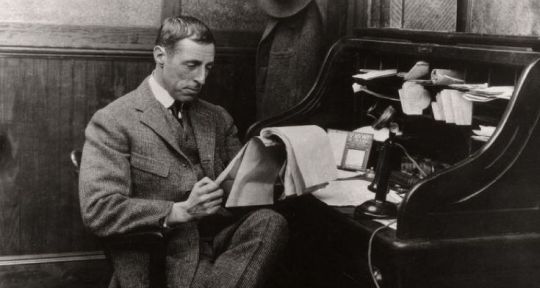
D.W. Griffith: Birth of a Nation (1915) and Intolerance (1916)
Griffith started making films in 1908 and put out just about everything that he recorded. He made 482 films between 1908 and 1914, although most of these were shorts. His most famous film today is absolutely Birth of a Nation and it is one of the most outlandishly racist films of the time. The depiction of black Americans as evil and the Klu Klux Klan as heroes who are protecting the nation didn't even really go over well at that time. Some believe that his follow up the next year called Intolerance was an apology, but the film actually addresses religious and class intolerance and avoids the topic of racism. At the time, Griffith films were known for the massive sets and casts of thousands of extras, but today he is known for his racist social commentary.
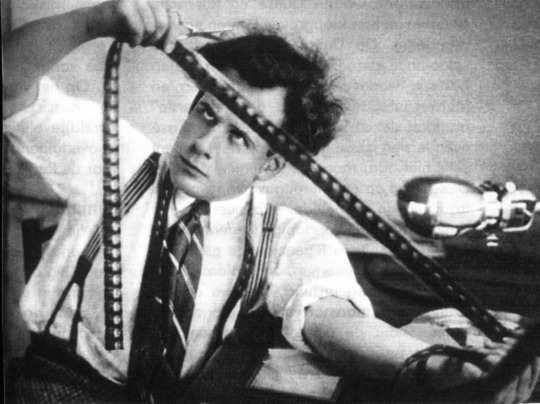
Sergei Eisenstein: Battleship Potemkin (1925)
This eccentric Russian director was a pioneer of film theory and the use of montage to show the passage of time. His reputation at the time would probably be similar to Tim Burton or maybe David Lynch. He had a very specific strange style that made his films different from any others. The film Battleship Potemkin is considered to be one of the best movies of all time as rated by Sight and Sound, and generally considered as a great experimental film that found fame in Hollywood as well as Russia.
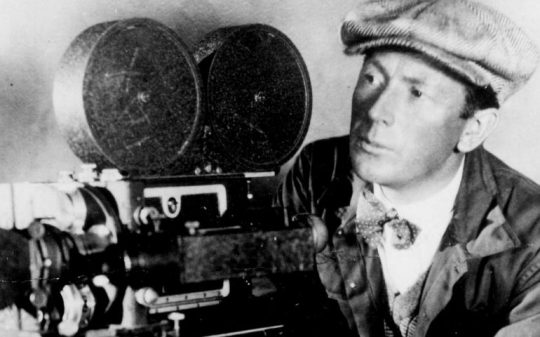
F.W. Murnau: Nosferatu (1922), Faust (1926), and Sunrise: A Song of Two Humans (1927)
I think that most people would know the bald-headed long-nailed vampire Nosferatu that was a silent era phenomena. It was so iconic that the German film studio that produced the movie was sued by the estate of Bram Stoker and had to close. Faust was his last big budget German film and has an iconic shot of the demon Mephisto raining plague down on a town that was the inspiration for the Demon Mountain in Fantasia (1940). Also, Sunrise is considered one of the best movies of all time by the AFI and by Sight and Sound as well as my favorite silent film. Fun facts: 1) more of Murnau's films have been lost then are still watchable and 2) he died in a car wreck at only 40 when he hired a car to drive up the California coast and the driver was only 14.
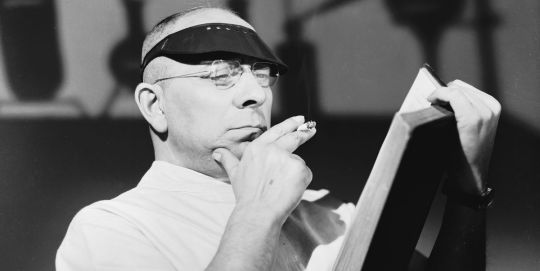
Erich von Stroheim: Greed (1924)
Maker of very strange German Expressionist films, Stroheim films are often listed as Horror or Mystery even though he considered himself a dramatic film maker. His most famous movie Greed was supposed to be amazing with an 8 hour run time but it was cut drastically to the point that it makes no sense and was both critically and publicly panned when an extremely abridged version was released in the U.S. Over half the film was lost and a complete version no longer exists. Besides this film, Stroheim was even better known for being the butler in the film Sunset Boulevard as a former director who retired to be with an aging silent film star. He also made a movie called Between Two Women (1937) that told the story of a female burn victim that was inspired by the story of his wife being burned in an explosion in a shop on the actual Sunset Boulevard.
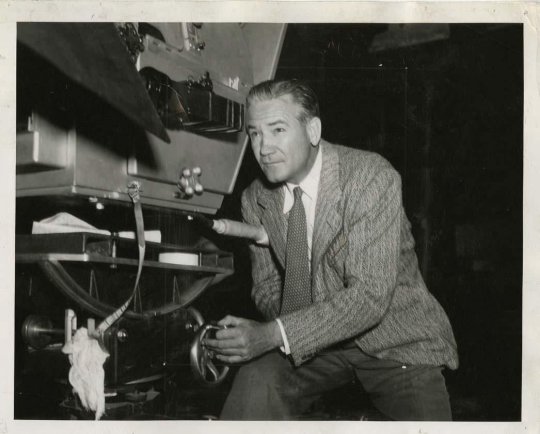
Victor Fleming: The Wizard of Oz (1939) and Gone With the Wind (1939)
Although not known for his silent films, Fleming did get his start during the silent era. He was a cinematographer for D.W. Griffith and then Fleming directed his first film in 1919. Most of his silent films were swashbuckling action movies with Douglas Fairbanks or formulaic westerns. He is the only director to have two films on the AFI top 10 and they happened to have come out the same year.
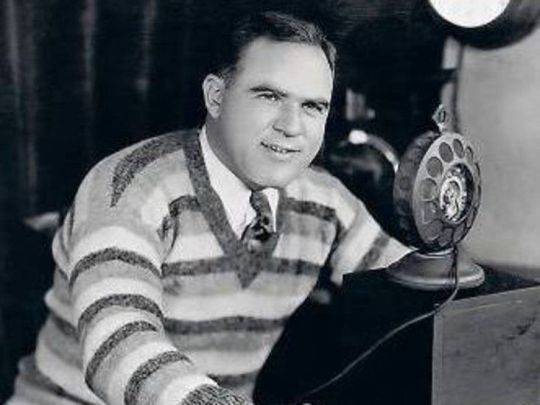
Hal Roach: Lonesome Luke films starring Harold Lloyd, Our Gang shorts, Laurel and Hardy shorts, and Of Mice and Men (1939)
It is not really fair to put Hal Roach in the silent era directors because he was influential at the time but he had a 75 year career. He was a producer and film studio head and even had a studio named after himself. His biggest contribution to the silent era was his production of Harold Lloyd short comedies and he continued to produce films in the early talkies including Laurel and Hardy shorts, Our Gang shorts, and Wil Rogers films. Roach was the inspiration for the film Sullivan's Travels, in which a famous director who only did frivolous comedies goes out into the world to find inspiration to find a serious drama. Roach did direct a single serious drama, Of Mice and Men, but it came out in 1939 and was buried underneath the works of Victor Fleming. The wealthy cigar smoking studio head that many people think of when they picture a film studio suit is based on this guy. The man would not quit and stayed in the business into his 90s and lived to the ripe old age of 100.
22 notes
·
View notes
Text
Listed: Tangents

Sydney-based quintet Tangents have been playing together since 2010, but 2016’s Stateless LP marked a shift in the band’s method and sound, bringing their improvisational, collaberative playing into the studio to be reconsidered and reconfigured in the moment. This year’s Stents + Arteries EP showed the continued vitality of that approach and teased their new album New Bodies, of which Dusted’s Ian Mathers said their “post-everything mode of working is embracing rather than exclusionary [...] the result creates something intoxicatingly new.” To mark the occasion, all five band members have contributed to our Listed feature, with influences and interests running from U2 to µ-Ziq and back.
SHOEB AHMAD
Tony Conrad & Faust—Outside The Dream Syndicate
youtube
Leading up to the New Bodies recording session, I started playing bass guitar at points during our live set and really enjoyed locking into Evan with a singular pulse while the other three could let loose melodically. I wanted to pursue something similar in vibe when recording so that’s what you hear from me on ‘Gone To Ground’.
This album is pretty up there for me - not as ecstatic as LaMonte Young’s “dream music” works that Conrad was part of but also not as freewheeling as the Faust albums before this and definitely darker than both.
I love the myth of Jean-Herve Peron playing the second bass note on “From The Side of Man and Womankind” against Conrad’s wishes and I’d like to say that the loose implied funk of my bass playing is in a tribute to that.
U2—”Stay (Faraway, So Close!)” from Zooropa (1993)
youtube
Tangents is pretty left field with our musical aesthetics so this selection could be seen as a complete joke but I’ll own U2’s influence on me as a musician, even if it’s a bit naff to others.
A lot of the processes in place for the making of Zooropa (the album this track is from) remind me of how we like to work in Tangents - Ollie in a pseudo Eno role with his loops and live effects, melodic/harmonic improvisations and rhythm based studio jams - but the thing that resonates most about this song in particular is The Edge’s lullaby-like guitar riff that creates and then sustains the sweet sentimentality throughout. I’d say as much as his “single note through effects” style is basically the seed from where my guitar playing grew from, his fondness to write simple twee melodies on their best songs has influenced me more. I enjoy being able to do something similar to offset the more adventurous elements of our music and I’d say it comes to the fore in New Bodies more than before too.
Oh - did I say I was a sucker for the Wim Wenders video that was intercut with scenes from Wings Of Desire? I be honest, I think U2 may have more to answer for in making me wanna pursue an Art Pop vibe...
PETER HOLLO
µ-Ziq vs The Auteurs—”Lenny Valentino 3″ from The Auteurs vs. μ-Ziq (1994)
youtube
If we talk strings in Tangents, we’ll probably be referencing somebody like Godspeed, but as contemporaries I find it hard to describe them as an influential. I love their work but never for a second think of them when I’m playing the cello. So I’m choosing this gorgeous piece of faux-classical string pads with overdriven beats from the maestro Mike Paradinas aka µ-Ziq (it’s got very little to do with the Auteurs), because mid-’90s idm is in my blood, and Mike’s (and Richard D James’) plangent layered strings are always in there when I’m layered cello lines.
Amon Tobin—”One Day In My Garden” from Bricolage (1997)
youtube
Ollie & I have many discussions about our love of jungle & drum’n’bass. Ollie’s duo Icarus of course were contemporaries of early Amon Tobin, and a track from their first album appears on his Recorded Livemix album - serious props! Obviously the insanely chopped beats of the junglist pioneers, then Photek & Source Direct et al, contribute to our modus operandi(Photek joke, sorry), as do the more avant-garde sounds from Plug, Aphex, µ-Ziq et al. But Amon Tobin drew from his love of jazz and Brazilian music to create magnificent journeys in each track - the samba gives way to snapping breaks as, presumably, the garden becomes a jungle, and calm is returned by the end. Amon Tobin once regarded himself as a collagist more than a musician, and this collage aspect, albeit drawn from the instrumentalists in the band, is a big part of Tangents’ construction of our music.
EVAN DORRIAN
Arca—Arca
youtube
Everything Arca does has been blowing my mind for a while now. The production, rhythms, art, various (high-profile) collaborations, and on this record, his beautiful vocals, are all next level. Funnily/awkwardly enough I first heard Arca because his Soundcloud release (set/mix) Entrañas was reviewed next to our album Stateless by Pitchfork. A real honour to paired up with such a incredible modern artist, even just in web print. Looking forward to hearing more from him.
Scott Walker—Bish Bosch
youtube
This was and is a very important record for me, as is all Scott’s stuff from Tiltonwards (and Scott 4). When I first heard it I wasn’t sure how to take it all in and I’ve come to accept that I won’t. It’s a complicated and dark record that has a lot of wit and heart too.
ADRIAN LIM-KLUMPES
Tim Hecker— “I’m Transmitting Tonight” from Radio Amor (2013)
youtube
Tracks from New Bodies like ‘Immersion’ and ‘Oort Cloud’ spring from music like that of Tim Hecker. To call this music ‘drone’ or ‘noise’ is to ignore the delicacy of the rhythms of the layers, as well as the jazz-like piano chords that flutter around in his musical stratosphere. ‘I’m Transmitting Tonight’ drifts along but also has a driving momentum, depending on your perspective while listening. Our music too has different angles to approach it. When I produced ‘Immersion’, I enjoyed crafting the stretch, reverb and delay of the piano and guitar, while slamming the cello down an octave so it pensively mumbles below the stacked drum takes. This means you can hear this track almost as jazz, drone or minimal, depending on what your ear is drawn to. ‘Oort Cloud’ has similar cascading piano loops over cello and guitar drowning in sometimes noisy processing, all with an uptempo drum take layered in behind.
Bill Evans—Live in Helsinki 1970
youtube
“You use the intellect to take apart the materials, learn to understand them and learn to work with them. It takes years and years of playing so that you develop the facility so that you can forget all of that, and just relax and just play.” - interview during the filming in Helsinki, 1970.
The music of Bill Evans has inspired me for many years. His approach to harmony, melody and interplay is nuanced and emotive, and almost always a sense of calm pervades his music. Playing like Bill Evans, and thinking like him, is a lifelong pursuit. With Tangents, Bill’s philosophy of facility before play is spread across many domains. This includes pianism, a fluid approach to harmony and layering, and even the skills involved to intuit the use of effects pedals and software. The same goes for the others in Tangents - having a meta-consciousness of our band sound while improvising on stage or in the studio is necessary for all of us.
I’d love to see more live concert videos where the artist eloquently discusses musical approaches mid-set.
OLLIE BOWN
This is more of a discussion of records that I dream might be more explicitly inspirational in future Tangents records.
Alice Coltrane—Eternity
youtube
The loose funky joyousness that I associate with Coltrane is something I think we've started to explore in Tangents of late, though it is still quite latent. We don't really foreground solos too much though, which is something I like about our sound. I've been digging into her archives a bit lately and reflecting on how hard but rewarding it is to find that playful balance point where everything is poised on the verge of falling apart, as in the jammy madness and rhythmic pushing and pulling of Los Caballos. Many bands do this exquisitely and in one guise or another it's always been a strong interest for me, starting in my work with Icarus. There are moments where I think Tangents take it there, such as in the middle section of Terracotta. I look forward to exploring this more both in live improvisation and in studio post-composition. Then I love the fact that this record drops into a Rite of Spring passage (my favourite passage, seriously funky, excellently done). Also inspiration for future work: I'd love to work with Tangents to explore innovative covers and reinterpretations one day.
Pink Floyd—Wish You Were Here
youtube
You can't get more boring than to pick Pink Floyd as an influence. Is anyone still reading? But! Truth told I was having a melancholy moment the other day and I put on Wish You Were Here and for the umpteenth time in my life it just blew me away. Tangents' current work is nowhere near this carefully planned, but I hope we might engage in this kind of strict structuring in a future album. Nevertheless that kind of space and casual smoochy blueseyness is something I think we have explored our own way in tracks like Lake George and Gone To Ground, which I actually think is very Floydy. I love the pace of Shine on You Crazy Diamond, that sax solo bursting out of nowhere is stunning, verging on ironic, but completely loveable. I love how Pink Floyd do suites and guest appearances and carefully work the segues between tracks.
#dusted magazine#listed#tangents#shoeb ahmad#peter hollo#evan dorrian#adrian lim-klumpes#ollie bown#tony conrad#faust#u2#µ-ziq#the auteurs#amon tobin#arca#scott walker#tim hecker#bill evans#alice coltrane#pink floyd
4 notes
·
View notes
Photo

SIDE NOTES: Tangerine Dream
When I first got into the rave scene in Missoula, Montana, I was entirely enthralled by the psychedelic electronic music drawn to my small, liberal hometown. Acts like Shpongle hosted masquerades at local theaters and hippies flocked to the hot springs for more psych-raves with glow paint and dreadlocks as far as the eye could see. My dad, less enthusiastic about my discovery, told me one day, “You wanna hear REAL pyschadelic electronica? Go look up Tangerine Dream.” He explained that these visionaries were the true roots of ambient and experimental electronic music. More than that, Edgar Froese (the founder) could envision things, artistically, that were entirely unique—music that utilized tools of a new era (the sequencer and mellotron) to create masterpieces unlike anything else. Embedded in the underground music scene of West Berlin in the ‘60s and ‘70s, Froese drew inspiration from classical music to traditional rock, adding recordings of his industrialized environment that he captured on a small tape recorder, almost as if to paint the very sound of life itself. He confidently sailed into uncharted waters, organizing these space-age symphonic collaborations under the name Tangerine Dream.
In the genre of krautrock, names like Kraftwerk, Can, and Faust tend to ring a bell, putting faces to an avant-garde mish-mash that developed in Germany in the late 1960s. Tangerine Dream paved the way for these other artists, and though the artists prefer to steer from traditional labels and boundaries in distaste, many regard Froese as the super father of the movement. The progressive rock sub-genre has been “described as an anarchic, intense, acid, tellurian, nocturnal, spacey, dark and oniric ‘adventure’ through rock music,” the string of adjectives manifesting the wide breadth of sounds beneath the umbrella. With over 100 albums, the vastness of Tangerine Dream’s discography is hard to describe, but AllMusic says that their sound ranged “from the most atmospheric new age and space music to the harshest abrasions of electronic dance.” Various lineups under Froese’s direction produced film soundtracks (Risky Business, Flashpoint, Legend) to soundtracks for video games (GTA V).
With Froese’s 2015 death due to an unexpected pulmonary embolism, many worried that the flame would flicker and die. Jerome Froese, Edgar’s son and ex-band member, posted on Facebook, saying, “Tangerine Dream was my Dad and my Dad is dead and so is Tangerine Dream.” After all, he was the one member who had been there through it all - the person who truly dreamed in tangerine. The band released a post-mortem statement, however, indicating their desire to carry out Froese’s vision through his previous instructions, sketches, and work with band members from previous incarnations. Now, the current lineup of Thorsten Quaeschning (synths and more), Hoshiko Yamane (violin), and Ulrich Schnauss (synths) is performing concerts all over the world in loving memory of Froese’s “change in cosmic address,” which is how Froese thought about death. I was fortunate enough to secure a place on the limited guest list for the memorial event hosted by his late wife, artist and musician Bianca Froese-Acquaye, in Berlin.

The mixed-media exhibition included fundraising for a memorial “SoundART” museum that is being built to ensure that Froese’s achievements are remembered through interactive displays of TD’s influences on music and art. Tangaudimax has not yet opened, but more information on the efforts of Acquaye and the Eastgate Music Team can be found here. The event was intimate and instead of a simple speech accompanied by a set from the current lineup, the event truly characterized Froese’s movement, giving me a better understanding of his involvement in the Berlin music scene. Of course, the hour-long set by the current lineup was beautiful — a cosmic soundscape paired with a video display of tessellating geometry, wavy galaxies, and kaleidoscopic nature. The pure power of the synth, melding with industrial beats and echoing violin, had the room of 200 fans swaying in awe. If you are reading this and have never heard Tangerine Dream, their currently lineup made this wicked cover of the Stranger Things theme song. The best part of the cover is that the show features TD music and the composers behind it took inspiration from TD’s discography of soundtracks. I stood, jealous of the majority who were most likely friends of Froese – fans who had seen the group in their zenith – but this jealousy was suppressed by the powerful feeling of togetherness created through appreciation for art.
The director of a Tangerine Dream documentary spoke, tickets were drawn to see who would take home the surrealist prints of Froese’s digital graphic work, and I sat taking everything and everyone in. The slew of art opened my eyes to a few key things readers should understand about the group. Instead of being a talented musician plucked by a record label to pump out pop hits, TD and Froese are embodied by an entire community and movement. Froese was an art appreciator whose inspiration not only came from other music, but from other forms of art. Inspired by Dadaism and Surrealism, an avid reader, he even organized an event at the house of Salvador Dali. The reading of Edgar’s Hendrix story fit swimmingly into the flow of the evening, giving voice to the deceased genius, as someone who knew people and who others looked to for direction in darkness. He was a man with such creative drive that he didn’t just follow in footsteps, but blazed new trails, shining light and color into a grey future.
By surrounding himself with likeminded artists and collaborating with many, Froese started to move mountains. His connections and community embody the current that started the wave of krautrock in Germany, and eventually the world. Experiencing people come together where it all started and hearing loved ones speak shed light on the pure power that this one man had and shared with those around him. As mentioned, Froese’s musing on death being a change in cosmic address made all the more sense by the end of the night because though he wasn’t in the neighborhood, his energy still electrified onlookers via the passion of his messengers. Such vibrant cosmic energy makes me wonder if it’s possible for a soul so innovative to rest in peace. Instead, I wish for Edgar Froese to transcend in peace, inspiring onlookers in showers of Tangerine Dreams.
-Erin Jones
#Side Notes#Tangerine Dream#Erin Jones#Edgar Froese#Jerome Froese#Thorsten Quaeschning#Hoshiko Yamane#Ulrich Schnauss#krautrock
1 note
·
View note
Text
Art F City: The Venice Biennale Pavilions: Caged Dogs, Fallen Logs, and the Problem of Time
A view of the Giardini. Photo: Marsha Owett
Pretty much any traveler will end up thinking about time in Venice given the age of the city, but the Biennale amplifies this tendency. Even in thinly attended years, visitors to the Venice Biennale preview quickly get used to standing in long cues to see popular pavilions. As far as VIP events go, the pavilion previews aren’t the least bit exclusive, so wait times come with the territory. As a result art is often considered by whether or not it’s worth the time you budget.
Usually, though, there’s at least some pay-off for spending time in a line. (This didn’t prove true for the Biennale show.) This year, I probably spent the most time waiting to get into Anne Imhof’s four hour long opera ���Faust” at the German Pavilion—about an hour—which meant I caught about an hour inside the pavilion. That’s less time than I wanted, though given that there were two caged Doberman Pinschers outside the pavilion and performers who occasionally came out, the wait time was clearly intended to be part of the experience. Two out of four hours doesn’t seem that bad for a performance that’s not intended to be seen from start to finish.
The dogs were a dramatic touch and certainly primed the audience for a performance largely about power. They are, after all, a trophy dog meant to display power and aggression. At one point, a performer perched herself at the top of the 14 foot cage, adding to the spectacle. Yet spectacle—of which there was plenty—is different than the grandeur typically associated with operas. There is no grandeur here. The performers wore dour expressions and weathered black athletic gear. Inside, a raised floor made of glass creates an underworld for the performers, but is otherwise bare except for an array of cell phones, chargers and other personal electronics. No part of the set or costuming seems large or flashy.
The final act in “Faust”. Photo: Paddy Johnson
I wondered if some of these decisions were a reflection of a culture that has become inured to the effects of scale and ostentation, but for Americans, at least, that can’t be true. We elected Donald Trump. A better explanation might simply be that the health goth aesthetic furthered the idea that sensitivity and vulnerability does not preclude the possibility of toughness and anger.
Certainly, the performance itself reinforced this idea—at one point, from the vantage point of the floor, I watched a woman underneath me sing while lying on her back. She sang with her fist to her mouth, onto which she had affixed a small microphone with medical tape. At times her fist would begin to shake, though I was unsure if this was an expression of fortitude or fragility.
Just as often, the piece felt oddly church-like, as though we were watching a kind of ritualized endurance project. (Jennifer Lacey, Antonija Livingstone, Dominique Pétrin and Stephen Thompson’s “Culture Administration & Trembling” performed at the Abrons Art Center last year had similar qualities). In some instances, performers stood on ledges high above the audience (at one point, I’m told they danced with a dead chicken and splayed it against the plexiglass ledge.) In others, performers scurried under the transparent floor and through semi transparent glass, transforming their bodies into a ghost-like presence against the clear reflection of visitors.
After the performance had ended I returned to the stage, though now there were only a few visitors in the pavilion. Walking over the set—which without the visitors to cover the floor was completely transparent—I was overcome with vertigo. I might have been walking over glass, but it looked like I was walking on air, and I started to feel nauseous. Mostly, this is due to my own fear of injury and death. But on another level, I couldn’t help but think that ritualistic quality of the piece demanded an audience—feeling disorientingly empty without one. It was one more reason “Faust” felt like going to church. Church, with black lipstick.
Geoffrey Farmer’s “A Way out of the Mirror”. Photo Marsha Owett
Exiting the German Pavilion leads one directly to the Canadian Pavilion, which had no lines whatsoever. That’s not necessarily an indication of the quality of the work, though in this case the two happened to align.
As it happens, there was also no pavilion to speak of—Canada is renovating its exhibition space. To kick off the project, artist Geoffrey Farmer disassembled the bulk of the building leaving only a few support beams and installing a fountain that squirted water a several feet into the air. Farmer carefully placed large pieces of lumber around and inside fountain, as well as a grandfather clock nearby. I was a bit confused about why a viewer should care about the show—the Brooklyn Museum’s water fountains are far more impressive and nobody bothered to call them art. The press release didn’t help. It talks about two images that informed the piece, which is titled “A Way Out of the Mirror”. One was his grandfather’s lumber truck after it had been hit by a train. The other was Hieronymus Bosch’s “The Garden of Earthly Delights”, a picture that reminds Farmer of a fountain at the San Francisco Art Institute, which was important to him because it was the city he came out in during the Gulf War and AIDS crisis.
Now, that’s a whole lot of personal history, and sadly none of it amounts to anything visual worth contemplating. It’s a bit of a downer after coming off such a high at the German pavilion.
United States Pavilion. Mark Bradford, “The Oracle”.
Thankfully there were other highs, though they did include waiting in line. Most notably, the wait to see the US pavilion this year proved worth the effort. Mark Bradford used abstract painting as an architectural intervention, literally transforming the building for this installation “Tomorrow is Another Day”. Visitors enter through a side door, meant to allude to a servant’s entrance. A thick black sculpture with mutable tarry skin hangs from the ceiling, leaving only a small passageway. This forces visitors to the outer wall of the pavilion, which I read as an allusion to those marginalized in society. It works.
Bradford similarly transformed the center rotunda, papering the walls white and then covering the ceiling further with strips of thick black and yellow paint. The materials make the rotunda look as though it’s been taken over by a strange sickly growth‚—the paper a flaking skin and the paint a strange and odious growth. The reasons for this growth are unknown, but it’s hard not to interpret the piece as a reflection of our deteriorating institutions. The architecture is crumbling and there are no stewards in sight.
The rotunda leads into abstract paintings that have lighter palette and open up compositionally. Bradford made the paintings without the use of brushes—he built up the surface with layers of paint and then removed them with an electric sander. While visually stunning, for me, these felt a bit forced. Spheres dominate over all other motives and webs of paint coated the surfaces, at times resembling a bad sci-fi wallpaper.
They did however sufficiently lighten the mood for the final room of the pavilion, where a short loop of Bradford’s former neighbor, Melvin, plays. The video consists only of footage of Melvin swinging his hips gently as he walks away from the camera and down a street in the slums of South Central. The piece is titled “Niagara” a reference to the final scene in the Marilyn Monroe movie of the same name where she similarly saunters off into the distance.
When I first saw the video, it struck me as rather sad. Melvin was forever stuck in that loop and in those slums. The piece was executed in 2005—where was he now? After a while, though, I stopped asking that question and became enraptured with the swing of his walk—a sly act of of both resistance and pleasure.
Elsewhere in the exhibition, I hadn’t found much hope, but within the context of this video, a lot of the work seemed to be setting the stage for what comes next. And I was looking for that, in no small part because I spent my time in line for the show reading the extra-textual material about Art + Practice, a non-profit founded by Mark Bradford. Through Process Collettivo, they partnered with Rio Tera dei Pensieri in Venice to work with incarcerated people and to support their transition to self-sufficiency.
It’s a great project and reflects the narrative told by these paintings and videos. We’ve got a lot of work to do to build back our institutions, but further corrosion isn’t inevitable. It made me optimistic about the future.
And it got me thinking about time again. Whereas Bradford looked ahead to find strength, and Imhof’s opera reflects the anxiety of the moment, Farmer’s fountain was so situated in references to the past that it became unintelligible. That’s a common problem in contemporary art—building upon past references without having much to say—but perhaps its failures also a reflect our current needs. For better or for worse, we’ve changed too much for the voices of the past to guide us into the future. For this reason, the most relevant art I see reflects today’s uncertainty, while casting its gaze to whatever comes next.
from Art F City http://ift.tt/2sQ3Kaf via IFTTT
0 notes